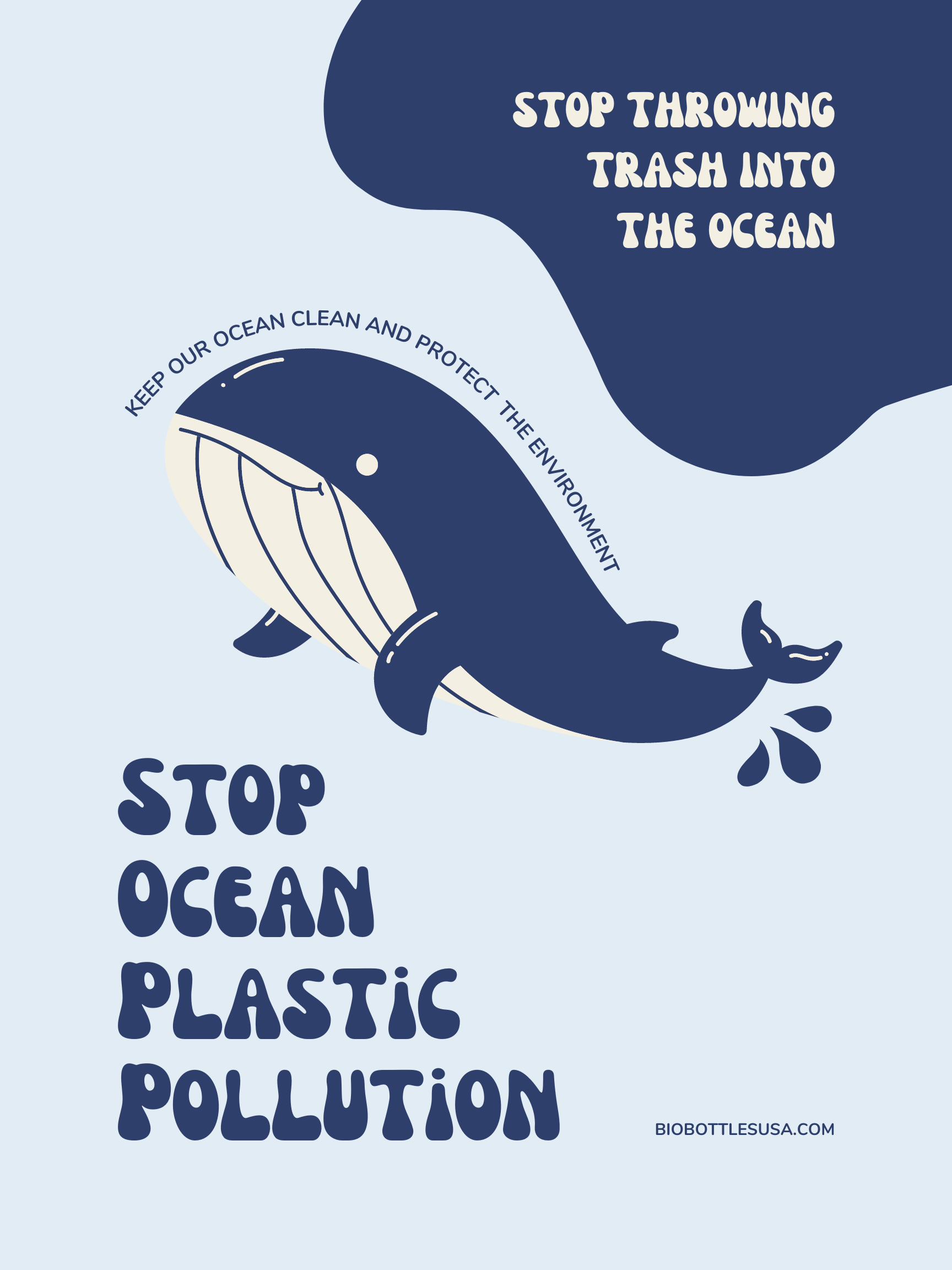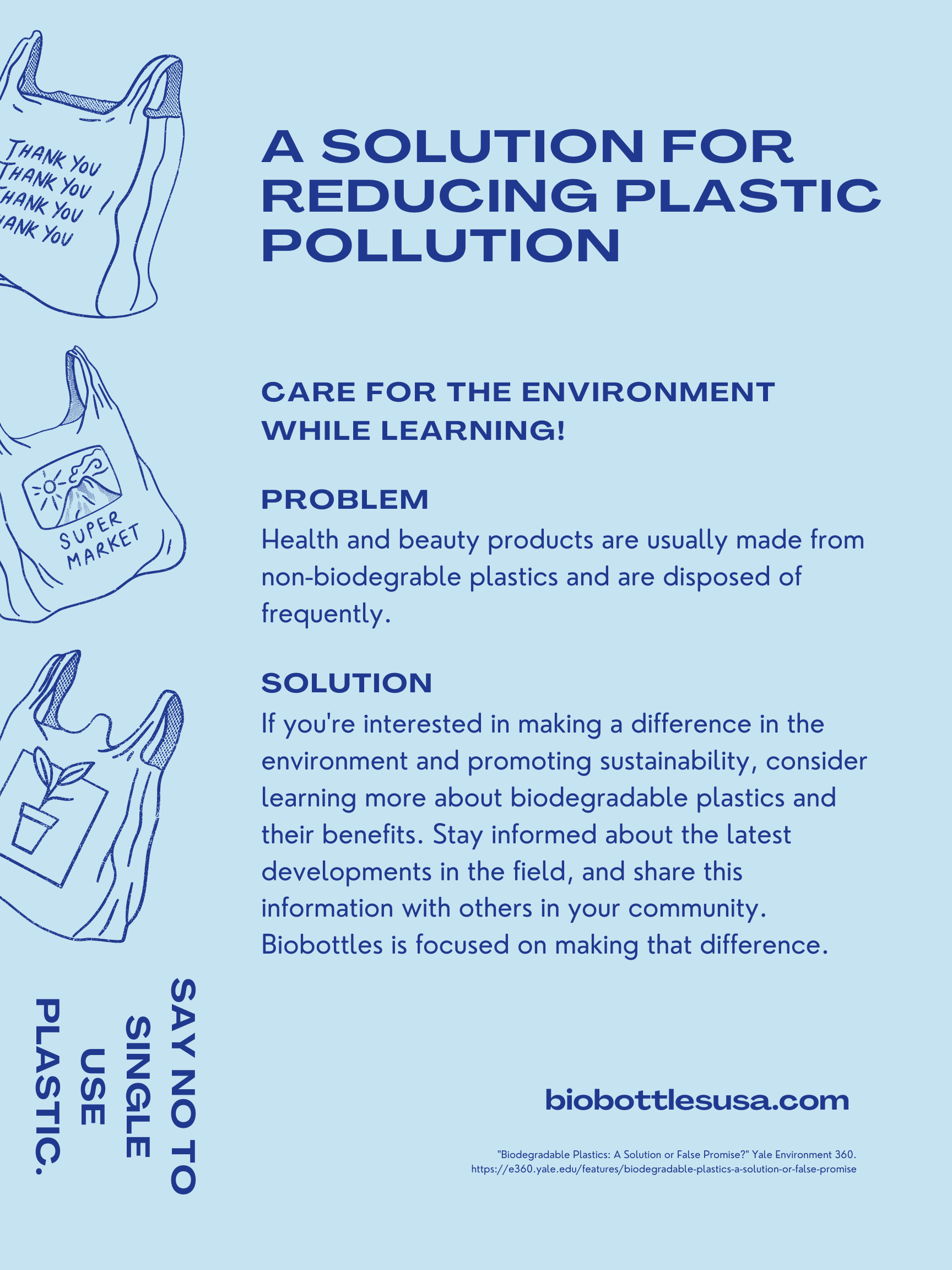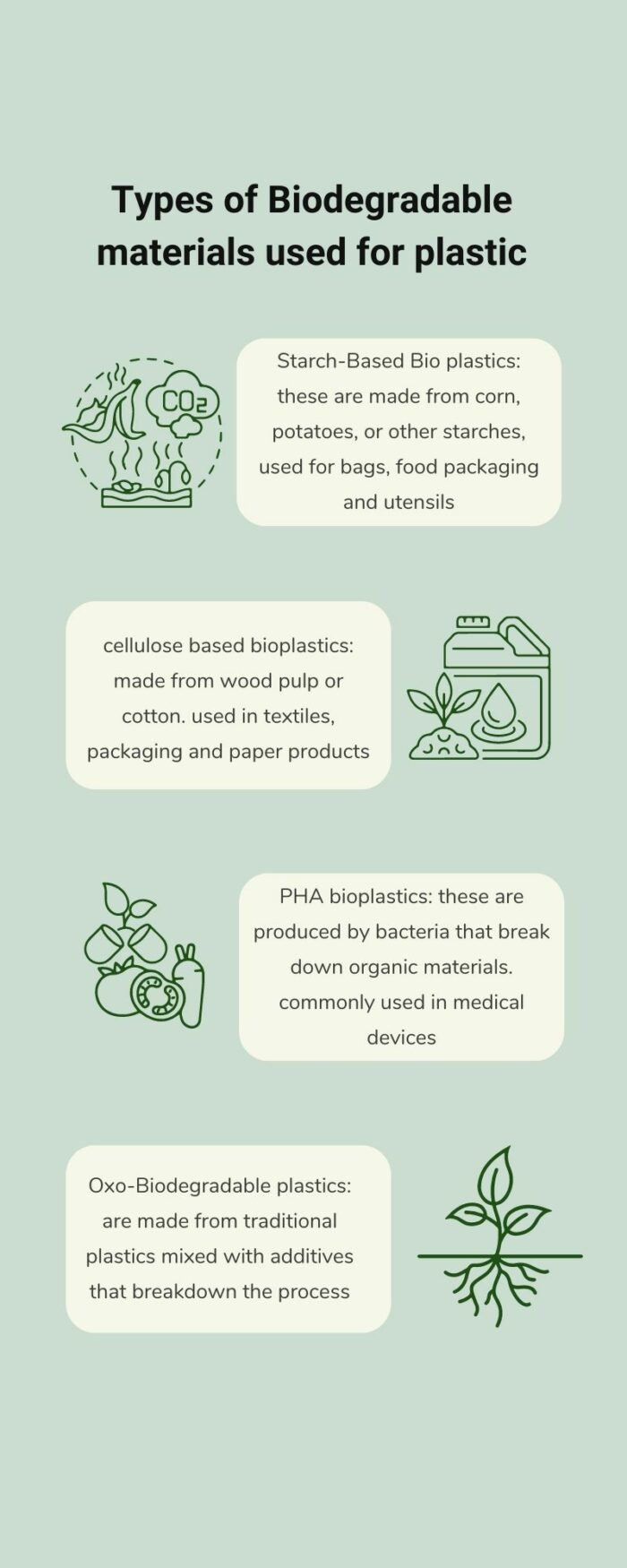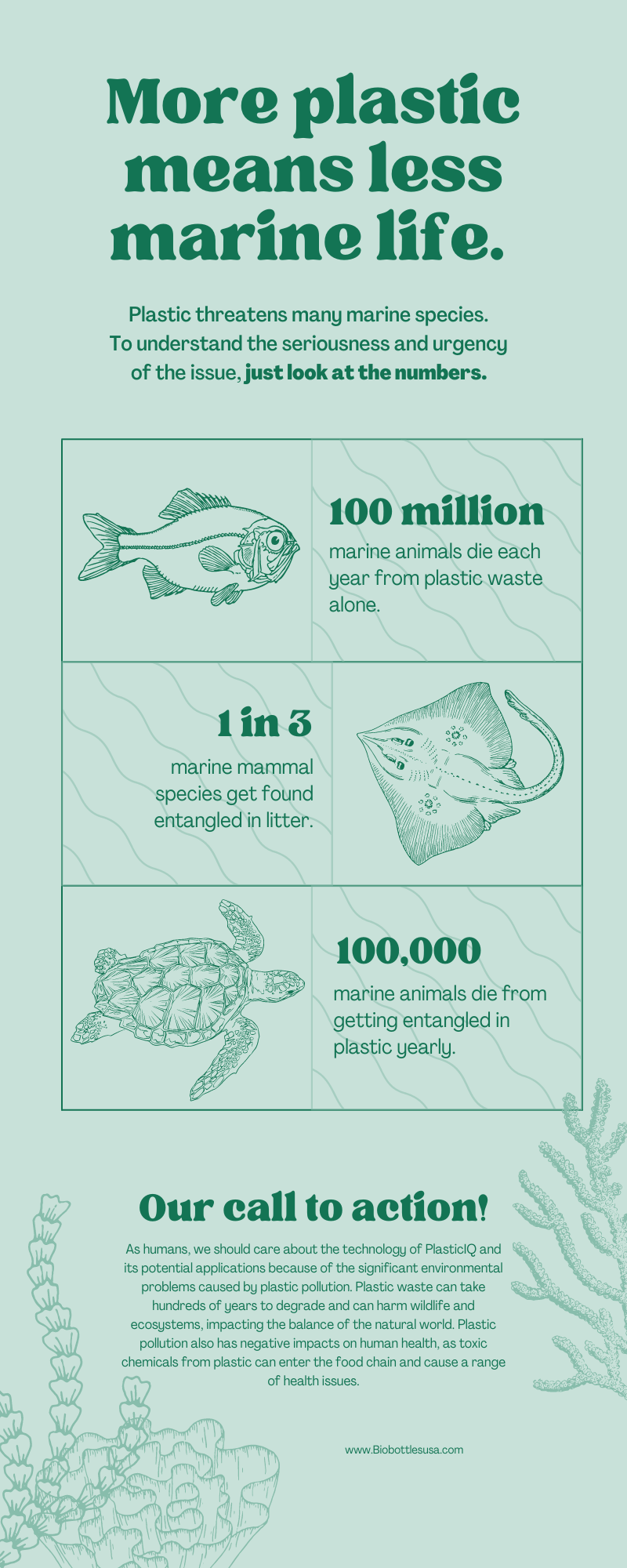What is Biodegradable Plastic?
Biodegradable plastic is a type of material that is designed to break down naturally over time. Unlike traditional plastics, which can take hundreds or even thousands of years to decompose, biodegradable plastics are made from organic materials that can be broken down by bacteria and other natural processes. This makes them an attractive alternative for those looking for more environmentally friendly options.
Biodegradable plastic refers to a type of material that is designed to break down naturally over time. Unlike traditional plastics, which can take hundreds or even thousands of years to decompose, biodegradable plastics are made from organic materials that bacteria and other natural processes can break down. Because they can break down into natural substances, biodegradable plastics are seen as a more environmentally friendly alternative to traditional plastics.
- Biodegradable plastics are made from materials that can break down naturally into simpler substances, such as carbon dioxide, water, and other organic compounds.
- There are two main types of biodegradable plastics: plant-based plastics made from renewable resources such as cornstarch, sugarcane, or cellulose, and petroleum-based plastics that are engineered to break down under specific conditions.
- Biodegradable plastics can be designed to break down under different environmental conditions, such as in soil, water, or compost, depending on their intended use and disposal.
- Biodegradable plastics are not necessarily the same as compostable plastics, which are designed to break down completely into organic matter that can be used to fertilize soil.
- The production of biodegradable plastics can help reduce carbon emissions and dependence on non-renewable resources, and their proper disposal can help prevent plastic pollution and its negative impacts on the environment.
- However, the proper management and disposal of biodegradable plastics is crucial to ensure they decompose efficiently and do not cause harm to the environment, and more research is needed to fully understand their potential benefits and limitations.
As we become increasingly aware of the negative impact of traditional plastics on the environment, biodegradable plastics offer a potential solution that can help us reduce plastic waste and promote sustainability. Understanding what biodegradable plastics are and their potential benefits and limitations is crucial to making informed decisions about their use and disposal. In this article, we’ll dive deeper into the world of biodegradable plastics and explore the factors that can affect their decomposition process, as well as the potential environmental benefits they can offer.
How Long Does it Take to Decompose?
The time it takes for biodegradable plastic to decompose can vary widely depending on several factors. Some types of biodegradable plastic can break down in as little as six months, while others can take several years or more. The decomposition rate can be affected by factors such as temperature, moisture, and the presence of microorganisms.
Biodegradable plastics are designed to break down into natural substances such as water, carbon dioxide, and biomass through the action of microorganisms like bacteria, fungi, or algae. The amount of time it takes for biodegradable plastics to decompose can vary depending on several factors, including the type of plastic, the environment it is in, and the conditions it is exposed to.
- Type of biodegradable plastic: There are many types of biodegradable plastics, each with its own unique properties and rate of decomposition. Some biodegradable plastics can break down in a matter of weeks, while others may take several years.
- Environmental conditions: The rate of decomposition of biodegradable plastic is also affected by the environmental conditions in which it is disposed of. For example, biodegradable plastics will decompose more quickly in a composting environment, where there is plenty of moisture and oxygen, than in a landfill, where the conditions are more anaerobic.
- Size and thickness: The size and thickness of biodegradable plastic can also affect how long it takes to decompose. Smaller and thinner items will break down faster than larger and thicker ones.
- Chemical additives: Some biodegradable plastics contain chemical additives that can help speed up the decomposition process.
Generally speaking, biodegradable plastics can take anywhere from a few months to several years to decompose fully. For example, some biodegradable plastics made from plant-based materials like cornstarch, PLA (polylactic acid), or PHA (polyhydroxyalkanoate) can decompose within 3-6 months in ideal conditions such as composting facilities where temperature, moisture, and oxygen levels are carefully controlled.
Factors That Affect Biodegradable Plastic Decomposition
The factors that can affect the decomposition of biodegradable plastics include environmental conditions, the type of biodegradable plastic, thickness of the plastic, exposure to light and heat, presence of microorganisms, presence of contaminants, and the size and shape of the plastic. Here are some more details about these processes and how they work:
- Environmental Conditions: Biodegradable plastics require specific environmental conditions to break down properly. For example, compostable plastics require specific temperatures, moisture, and oxygen levels for optimal decomposition. If these conditions are not met, the decomposition process can be slowed down or halted.
- Type of Biodegradable Plastic: Different types of biodegradable plastics decompose at different rates depending on their chemical composition. Plastics made from plant-based materials like PLA or PHA typically decompose faster than plastics made from fossil fuels.
- Thickness of Plastic: The thickness of the plastic can also affect its decomposition rate. Thicker plastics will take longer to decompose than thinner ones.
- Exposure to Light and Heat: Some biodegradable plastics require exposure to UV light or heat to break down properly. If the plastic is not exposed to enough light or heat, it may take longer to decompose.
- Presence of Microorganisms: Microorganisms such as bacteria, fungi, and algae are essential for the decomposition of biodegradable plastics. If these microorganisms are not present in sufficient numbers, the decomposition process will be slower.
- Presence of Contaminants: Biodegradable plastics can become contaminated with other materials, such as food waste, oils, or chemicals, which can interfere with the decomposition process.
- Size and Shape of Plastic: The size and shape of the plastic can also affect its decomposition rate. Smaller pieces of plastic will decompose faster than larger ones, and plastics with a larger surface area will decompose more quickly than those with a smaller surface area.
The decomposition of biodegradable plastics is influenced by several factors, including the type of plastic, environmental conditions, the presence of microorganisms, and the size and shape of the plastic. Understanding these factors is essential in ensuring that biodegradable plastics are disposed of properly and decompose efficiently. By considering these factors, we can work towards creating a sustainable system where biodegradable plastics can be used responsibly without causing negative impacts on the environment.
Environmental Impact of Biodegradable Plastic
Biodegradable plastics offer several potential environmental benefits. By breaking down into natural substances, biodegradable plastics have the potential to reduce the accumulation of plastic waste in landfills, oceans, and other environments. This can help to prevent harm to wildlife and ecosystems that can result from plastic waste. Biodegradable plastics made from plant-based materials also have the potential to reduce our dependence on fossil fuels and decrease carbon emissions associated with plastic production.
Additionally, biodegradable plastics can be used to create compost and organic matter, which can be used to nourish the soil and promote plant growth, thus contributing to a more sustainable and healthier environment. Overall, using biodegradable plastics has the potential to offer several environmental benefits, making it an important area of focus for those concerned with sustainability and environmental protection.
Biodegradable plastics have the potential to offer several environmental benefits. Unlike traditional plastics, which can take hundreds or even thousands of years to decompose, biodegradable plastics can break down into natural substances within a relatively short time frame. This can help reduce the amount of plastic waste that accumulates in landfills, oceans, and other environments, thus preventing plastic pollution and its negative impacts on ecosystems and wildlife.
What other Alternatives?
Biodegradable plastics made from renewable plant-based materials can also help reduce our dependence on fossil fuels and decrease carbon emissions from plastic production. They also have the potential to contribute to sustainable agriculture and soil conservation, as they can be used to create compost and organic matter that can enrich soil and support plant growth.
Moreover, biodegradable plastics can offer unique opportunities in fields such as medical devices, packaging, and other areas where traditional plastics are currently used. By providing a safer and more environmentally friendly alternative to conventional plastics, biodegradable plastics can offer a path toward a more sustainable and responsible future.
In summary, biodegradable plastics can offer several potential environmental benefits that make them an important area of focus for those concerned with sustainability and environmental protection. By using and disposing of biodegradable plastics responsibly and promoting innovation in this field, we can work towards a cleaner, healthier, and more sustainable future for ourselves and future generations.
What can I do about it?
As our world faces an increasing plastic waste crisis, using biodegradable plastics offers a potential solution to this urgent problem. However, it’s essential to understand the factors that can affect their decomposition and the proper management practices to ensure their full potential is realized.
If you’re interested in making a difference in the environment and promoting sustainability, consider learning more about biodegradable plastics and their benefits. Stay informed about the latest developments in the field, and share this information with others in your community.
When choosing products, look for those made from biodegradable plastics and dispose of them properly, following the guidelines set by your local waste management authorities. If possible, compost them to contribute to healthier soil and a more sustainable future.
Moreover, consider supporting research and innovation in biodegradable plastic technology to help create a more sustainable and responsible future for our planet. Join forces with organizations and individuals committed to reducing plastic waste and promoting eco-friendly practices, and spreading awareness about the importance of proper waste management and responsible consumer behavior.
Together, we can make a difference and create a cleaner, healthier, and more sustainable planet for future generations.
Conclusion
In conclusion, biodegradable plastics can be a useful alternative to traditional plastics, but it’s important to understand their limitations. If you’re looking to reduce your environmental impact, it’s worth considering biodegradable plastics as an option, but be sure to research and choose certified products to meet certain standards. With the right knowledge and precautions, you can help make a difference in protecting our planet for future generations.
Biodegradable plastics offer a promising solution to the plastic waste crisis plaguing our planet. By using materials that can break down into natural substances relatively quickly, these plastics have the potential to reduce the amount of plastic waste that ends up in landfills, oceans, and other environments. In addition, they can help reduce carbon emissions and our dependence on non-renewable resources, paving the way for a more sustainable future.
However, it’s important to remember that the proper management and disposal of biodegradable plastics are crucial to ensure their full potential is realized. If not disposed of properly, these plastics can still contribute to environmental harm, so it’s important to follow local waste management guidelines and ensure that these materials are disposed of in a way that maximizes their ability to break down naturally.
Moreover, it’s important to recognize that biodegradable plastics are not a panacea for the plastic waste crisis. Reducing plastic waste and promoting sustainability will require a multifaceted approach that includes reducing overall plastic consumption, increasing recycling and reuse, and exploring innovative solutions such as biodegradable plastics. By working together to promote responsible consumption and disposal practices, we can make a significant difference in creating a cleaner, healthier, and more sustainable future for ourselves and future generations.
We also did our research but feel free to do yours. Here’s a start!
- “What is biodegradable plastic? A guide to understanding biodegradable plastics.” European Bioplastics. https://www.european-bioplastics.org/bioplastics/what-is-biodegradable-plastic/
- “Biodegradable plastics: are they better for the environment?” The Guardian. https://www.theguardian.com/environment/2019/jul/24/biodegradable-plastics-are-they-better-for-the-environment
- “Biodegradable Plastics: Myth or Reality?” Science Direct. https://www.sciencedirect.com/science/article/pii/S2451929420300082
- “Biodegradable plastics and marine litter.” European Commission. https://ec.europa.eu/environment/marine/good-environmental-status/descriptor-10/pdf/20190311_Biodegradable_plastics_and_marine_litter_final.pdf
- “Biodegradable Plastics: A Solution or False Promise?” Yale Environment 360. https://e360.yale.edu/features/biodegradable-plastics-a-solution-or-false-promise


























